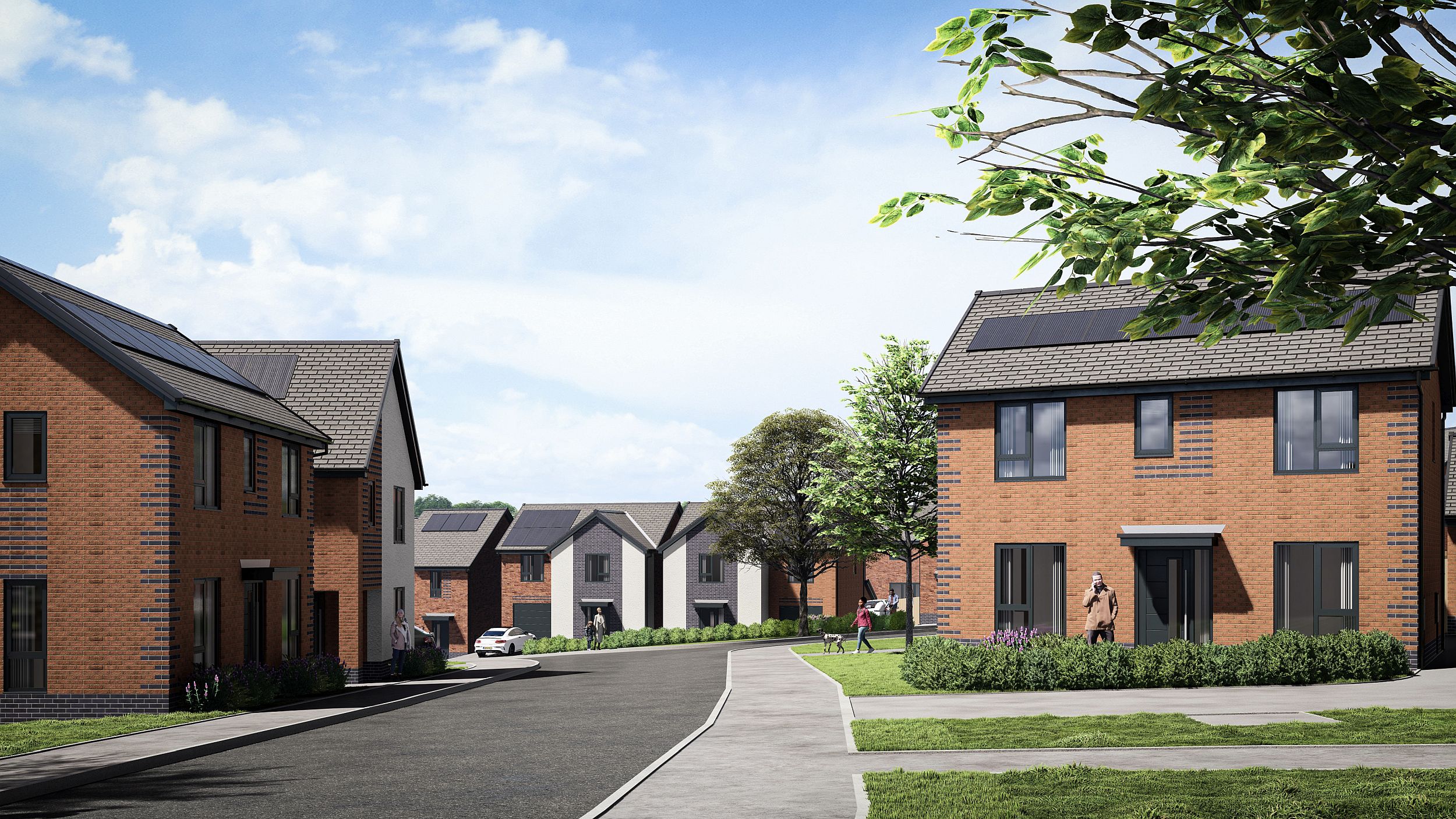Land registry – Concurrent registration – Rectification – Land registry mistakenly registering land under two different titles – Appellant applying to rectify register – Respondent opposing rectification on ground of adverse possession – Deputy adjudicator refusing to rectify register – High Court agreeing – Whether registered owner capable of being in adverse possession – Appeal allowed A small piece of disputed land (under two metres across at its widest point and four metres long) had been part of No 29 Milner Street, Chelsea, London SW3 (the appellant’s property) for almost a century. However, in 1986 the respondent’s parents purchased No 31, just across the road, and the land registrar erroneously included the disputed land in the title to that property. The appellant applied to rectify the register by excluding the disputed land from the title to No 31 and including it in the title to No 29. However the respondent opposed rectification on the ground that she had acquired possessory title to the disputed land under the Limitation Act 1980 by virtue of 12 years’ adverse possession by her predecessors in title. Therefore the appellant’s right of action to recover it was statute-barred. Alternatively, the respondent claimed to have an easement over the disputed land. As a result of long and open use as of right for car parking, No 31 enjoyed, as the dominant tenement, a prescriptive right to park a car on the disputed land, as the servient tenement. The High Court upheld a decision of the deputy adjudicator to the Land Registry that possessory title to the disputed land had been acquired by the owners of No 31, even though, throughout the relevant period, the persons claiming to be in adverse possession of it had been registered as the proprietors of it. Permission for a second appeal was granted on the ground that it raised an important point of principle involving the separation of legal and beneficial ownership in relation to adverse possession. Held: The appeal was allowed. (1) For the 1980 Act to apply, a right of action to recover possession of the land had to have accrued to the paper title owner and the person claiming possessory title had to have been in adverse possession of the disputed land for more than 12 years. In the present case, the previous owners of No 29 had not been dispossessed of the disputed land by the owners of No 31, and their possession of the disputed land during the relevant period was not “adverse possession” within the meaning of the 1980 Act. It had been lawful for the owners of No 31 to take and remain in possession of the disputed land, because they had a registered title to it. As long as they remained the registered proprietors, that possession would be lawful and could not be adverse to the owners of No 29. (2) It was now in the respondent’s interest to ignore the concurrent registration of title to the disputed land during the relevant period and instead to rely on a possessory title to it. However, unless and until the land register had been rectified by order, the legal position was that the owners of No 29 did not have a completed cause of action for recovery of the disputed land. They could neither have nor plead a better title to the disputed land than the owners of No 31. They both had registered title to it with all that that entailed under the Land Registration Act 1925 (now replaced by the Land Registration Act 2002). It was not open to the respondent to choose to ignore the legal fact of concurrent registration of title to the disputed land or its consequences. The mistakes of concurrent registration were liable to be rectified by order in accordance with the procedures in the 1925 Act. Subject to that corrective action, they were legal facts with legal consequences. The owners of No 29 could get that mistake rectified and would normally seek to do so once it had been discovered, but there was no time limit set for making such an application, as distinct from bringing an action for the recovery of land. In this case there were no circumstances from which a separation of legal title and beneficial ownership of the disputed land could be inferred or implied. Subject to rectification of the register by order, both parties had a good legal and beneficial title to the disputed land conferred by registration: Malory Enterprises Ltd v Cheshire Homes (UK) Ltd [2002] EWCA Civ 151; [2002] PLSCS 46; [2002] 10 EG 155 (CS) distinguished. (3) That analysis of how the 1980 Act operated in the case of concurrent registrations was consistent with the language of the relevant provisions in that Act and with the legal effects of the relevant provisions in the 1925 Act. It was also consistent with the overall scheme of the legislation affecting the gain and loss of title to registered land. The land register was a system of state-guaranteed registered title. Mistakes might be made and the legislation provided machinery for their correction and for indemnification with safeguards to protect the interests of the proprietor in possession and to prevent injustice. That was the machinery which had to be used to establish the true title to registered land before any question arose of establishing possessory title to registered land. (4) Furthermore. no easement to park could be acquired by a person who was, during the relevant period of user, the registered owner of both the dominant tenement (No 31) and the servient tenement (the disputed land). Christopher Pymont QC and Nigel Thomas (instructed by Wansbroughs, of Bristol) appeared for the appellant; Martin Rodger QC and Stephanie Tozer (instructed by Piper Smith Watton) appeared for the respondent. Eileen O’Grady, barrister
Land registry – Concurrent registration – Rectification – Land registry mistakenly registering land under two different titles – Appellant applying to rectify register – Respondent opposing rectification on ground of adverse possession – Deputy adjudicator refusing to rectify register – High Court agreeing – Whether registered owner capable of being in adverse possession – Appeal allowed A small piece of disputed land (under two metres across at its widest point and four metres long) had been part of No 29 Milner Street, Chelsea, London SW3 (the appellant’s property) for almost a century. However, in 1986 the respondent’s parents purchased No 31, just across the road, and the land registrar erroneously included the disputed land in the title to that property. The appellant applied to rectify the register by excluding the disputed land from the title to No 31 and including it in the title to No 29. However the respondent opposed rectification on the ground that she had acquired possessory title to the disputed land under the Limitation Act 1980 by virtue of 12 years’ adverse possession by her predecessors in title. Therefore the appellant’s right of action to recover it was statute-barred. Alternatively, the respondent claimed to have an easement over the disputed land. As a result of long and open use as of right for car parking, No 31 enjoyed, as the dominant tenement, a prescriptive right to park a car on the disputed land, as the servient tenement. The High Court upheld a decision of the deputy adjudicator to the Land Registry that possessory title to the disputed land had been acquired by the owners of No 31, even though, throughout the relevant period, the persons claiming to be in adverse possession of it had been registered as the proprietors of it. Permission for a second appeal was granted on the ground that it raised an important point of principle involving the separation of legal and beneficial ownership in relation to adverse possession. Held: The appeal was allowed. (1) For the 1980 Act to apply, a right of action to recover possession of the land had to have accrued to the paper title owner and the person claiming possessory title had to have been in adverse possession of the disputed land for more than 12 years. In the present case, the previous owners of No 29 had not been dispossessed of the disputed land by the owners of No 31, and their possession of the disputed land during the relevant period was not “adverse possession” within the meaning of the 1980 Act. It had been lawful for the owners of No 31 to take and remain in possession of the disputed land, because they had a registered title to it. As long as they remained the registered proprietors, that possession would be lawful and could not be adverse to the owners of No 29. (2) It was now in the respondent’s interest to ignore the concurrent registration of title to the disputed land during the relevant period and instead to rely on a possessory title to it. However, unless and until the land register had been rectified by order, the legal position was that the owners of No 29 did not have a completed cause of action for recovery of the disputed land. They could neither have nor plead a better title to the disputed land than the owners of No 31. They both had registered title to it with all that that entailed under the Land Registration Act 1925 (now replaced by the Land Registration Act 2002). It was not open to the respondent to choose to ignore the legal fact of concurrent registration of title to the disputed land or its consequences. The mistakes of concurrent registration were liable to be rectified by order in accordance with the procedures in the 1925 Act. Subject to that corrective action, they were legal facts with legal consequences. The owners of No 29 could get that mistake rectified and would normally seek to do so once it had been discovered, but there was no time limit set for making such an application, as distinct from bringing an action for the recovery of land. In this case there were no circumstances from which a separation of legal title and beneficial ownership of the disputed land could be inferred or implied. Subject to rectification of the register by order, both parties had a good legal and beneficial title to the disputed land conferred by registration: Malory Enterprises Ltd v Cheshire Homes (UK) Ltd [2002] EWCA Civ 151; [2002] PLSCS 46; [2002] 10 EG 155 (CS) distinguished. (3) That analysis of how the 1980 Act operated in the case of concurrent registrations was consistent with the language of the relevant provisions in that Act and with the legal effects of the relevant provisions in the 1925 Act. It was also consistent with the overall scheme of the legislation affecting the gain and loss of title to registered land. The land register was a system of state-guaranteed registered title. Mistakes might be made and the legislation provided machinery for their correction and for indemnification with safeguards to protect the interests of the proprietor in possession and to prevent injustice. That was the machinery which had to be used to establish the true title to registered land before any question arose of establishing possessory title to registered land. (4) Furthermore. no easement to park could be acquired by a person who was, during the relevant period of user, the registered owner of both the dominant tenement (No 31) and the servient tenement (the disputed land). Christopher Pymont QC and Nigel Thomas (instructed by Wansbroughs, of Bristol) appeared for the appellant; Martin Rodger QC and Stephanie Tozer (instructed by Piper Smith Watton) appeared for the respondent. Eileen O’Grady, barrister









